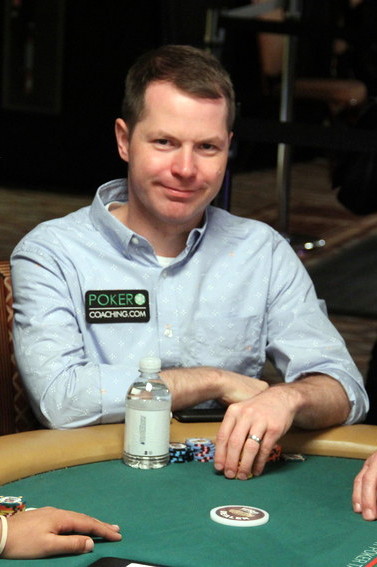






Bluff Before The Flopby Jonathan Little | Published: Dec 13, 2023 |
|
|
 If you want to increase your poker skills and learn to crush the games, check out Jonathan Little’s elite training site at PokerCoaching.com/CardPlayer.
If you want to increase your poker skills and learn to crush the games, check out Jonathan Little’s elite training site at PokerCoaching.com/CardPlayer.
A consistent mistake many recreational poker players make is that they only three-bet (re-raise) before the flop with their absolute best hands (perhaps A-A, K-K, Q-Q, J-J, 10-10, A-K, and A-Q). This may not sound like a detrimental mistake because they are investing money when they are the clear favorite, but in doing so, they make their opponents’ decisions easy.
Instead of only three-betting with the absolute best hands, you should also three-bet with some “bluffs.”
This will result in you being much more difficult to play against and will lead to your opponents making mistakes. You make money when your opponents make mistakes, not when they play well (as they often will when they know you have a premium hand).
In most small-stakes games against players who will usually call your three-bet to see if they flop a strong hand, you should three-bet with what is referred to as a linear range. A linear range includes all your best hands, as well as some decently strong hands that usually dominate or are ahead of much of your opponent’s calling range.
If your opponent four-bets (re-re-raises) when you are holding one of your lesser hands, you can simply fold, and when you have a premium hand, you can confidently get your stack in.
For example, in a $2-$5 cash game, someone raises to $15 out of their $500 effective stack from middle position and you are on the button. If your opponent will usually call when you three-bet, you should three-bet to $50 with a range of 8-8+, A-10+, and K-J+. If your opponent four-bets, you can easily fold 9-9, 8-8, A-J, A-10, K-Q, and K-J (and perhaps 10-10 and A-Q). When your opponent calls your three-bet (which will happen most of the time), they will usually be dominated and out of position, which is right where you want them.
If your opponent plays better and knows to only call three-bets with reasonable hands, you should three-bet with what is referred to as a polarized range. This range still includes your premium hands, but instead of three-betting your lesser value hands, you replace them with hands that have a decent amount of equity against your opponent’s calling range.
This usually means three-betting suited aces, suited connectors and gappers, and junky big cards. Essentially, you want to three-bet hands that are not quite good enough to call.
This strategy will put your opponent in a difficult spot because they will have no way of knowing if you have a premium hand or a weaker, but still playable hand. They also have to fear that you could have the effective nuts on essentially all flops.
For example, on J-5-5, you could easily have J-J, A-5 suited, 7-5 suited, 6-5 suited, or 5-4 suited. On A-K-Q, while you won’t have J-10, you could have A-A, K-K, Q-Q, A-K, and A-Q. Playing in this manner will result in you having at least some effective nut hands on all boards, as well as a few bluffs, again putting your opponent in a tough spot on the flop.
Three-betting with a range of more than just premium hands allows you to play more hands in a profitable manner. The more hands you can profitably play, the more money you will make in the long run.
If you want more resources to help you improve your game, I put together a course called Master the Fundamentals. This course covers the basics, preflop, post-flop, multiway, turn and river strategy, and much more. This course is completely free inside Card Player Poker School!
When you join the Card Player Poker School (it’s free to join), you’ll also get:
 Jonathan Little is a two-time WPT champion with more than $7 million in live tournament earnings, best-selling author of 15 educational poker books, and 2019 GPI Poker Personality of the Year. If you want to increase your poker skills and learn to crush the games, check out his training site at PokerCoaching.com/cardplayer.
Jonathan Little is a two-time WPT champion with more than $7 million in live tournament earnings, best-selling author of 15 educational poker books, and 2019 GPI Poker Personality of the Year. If you want to increase your poker skills and learn to crush the games, check out his training site at PokerCoaching.com/cardplayer.